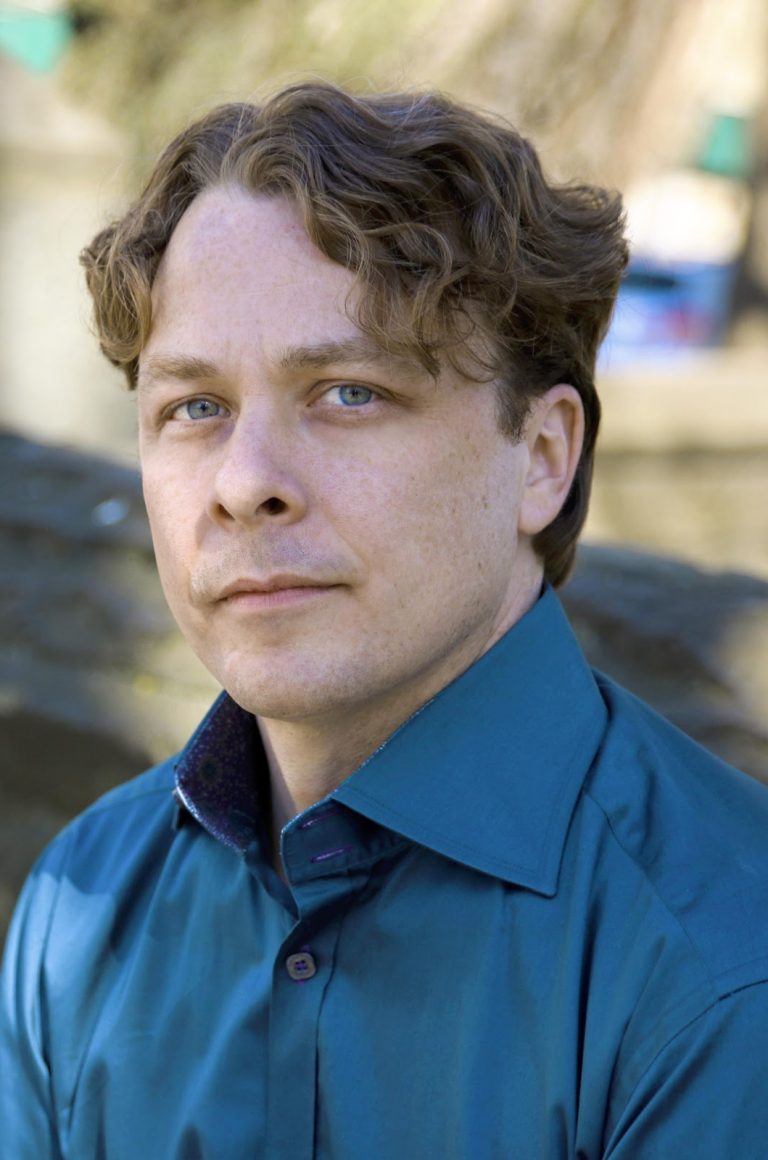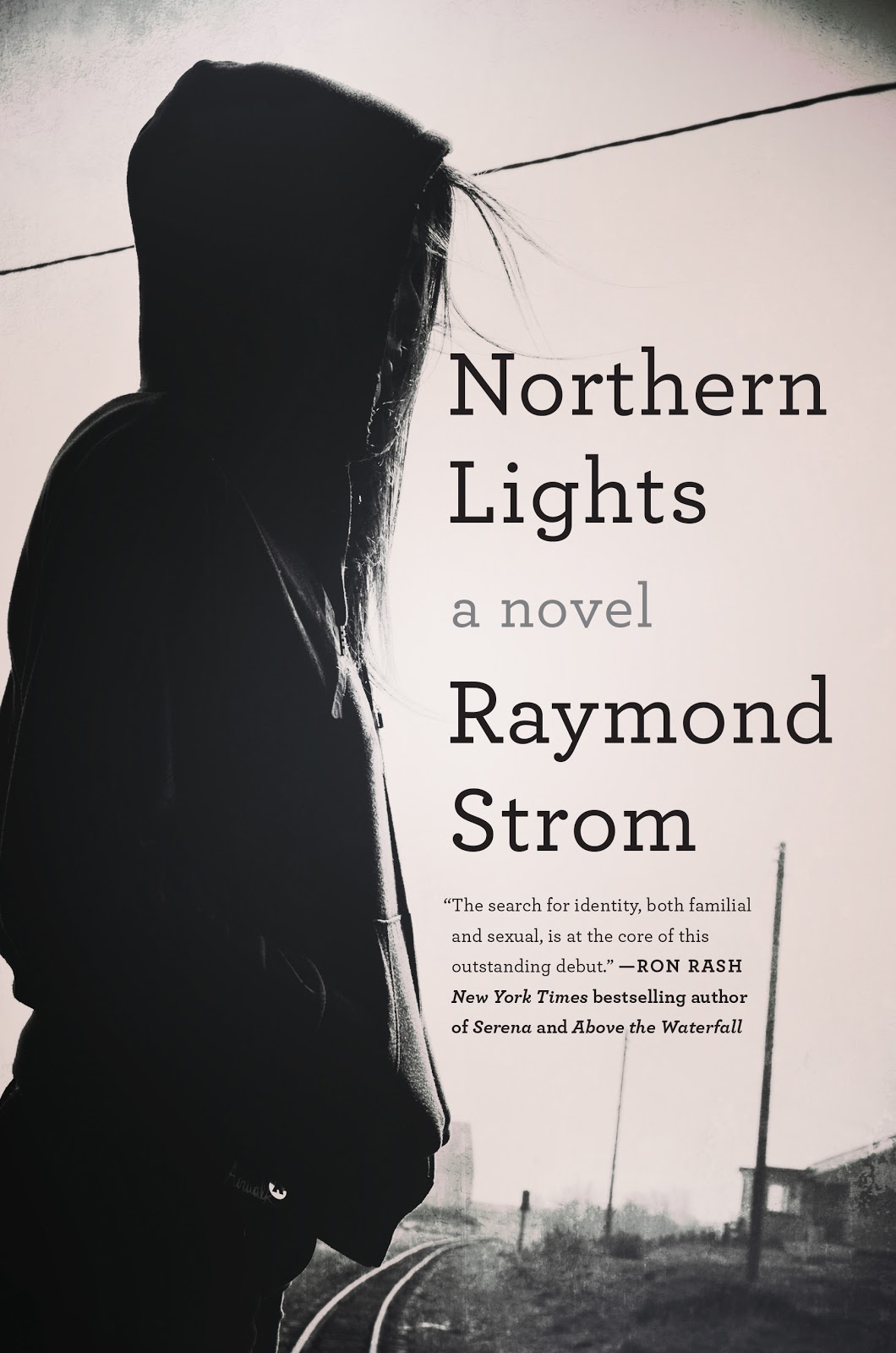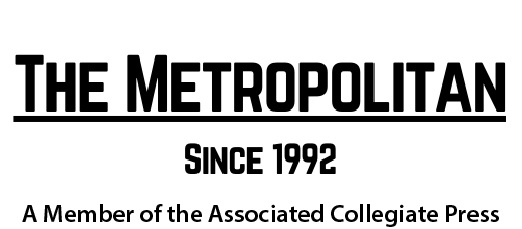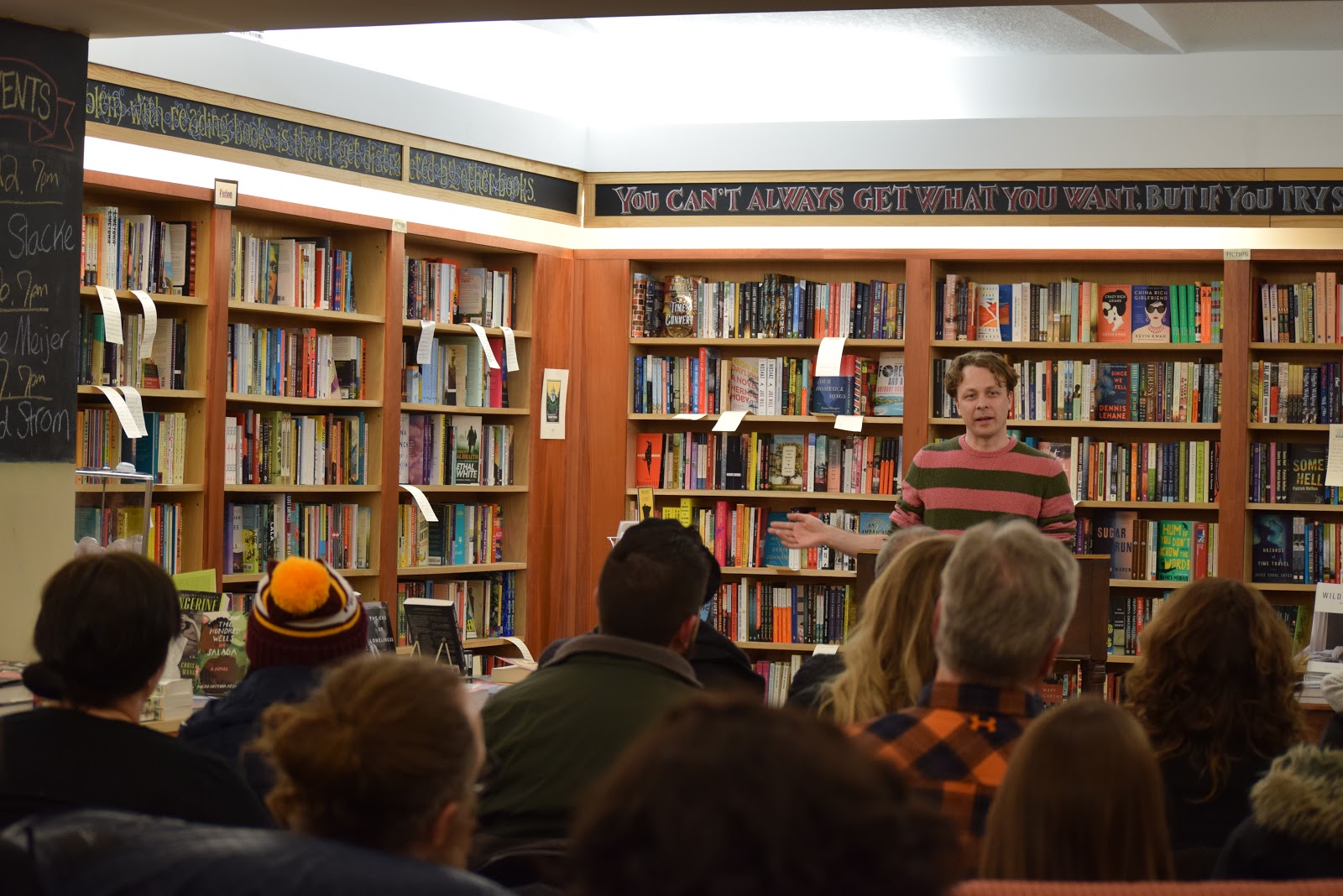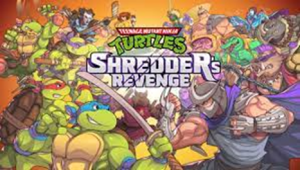Margot Barry
Share:
To promote his first novel, Metro State alumnus Raymond Strom returned to familiar ground: Minnesota. He once called small towns in the North Star state home, and they provided the inspiration for the coming-of-age story in “Northern Lights.”
The story is told through the voice of Shane Stephenson, a teenager kicked out of his Grand Marais home on the day of his 1997 high school graduation. That launches Shane into a search for his mother in the economically depressed, meth-filled, identity-challenged small town of Holm, Minnesota.
All these adjectives describe Shane too.
As dark and bleak as this may sound, “Northern Lights” also offers happiness, self-realization and hope. The novel rides fine lines, paralleling drug abuse with friendship, and expectations with realities. Shane’s story shows the subtleties we all must manage in life.
Before and during a reading on Feb. 27 at Subtext Books, an independent bookstore in downtown St. Paul, Strom shared the evolution of the novel.
Strom was a high school student in Cambridge in central Minnesota in 1997. A fellow student drove around town with a Confederate flag flying from his truck. That image stuck with Strom.
“It appeared to be a traditional community get-together, like a swap meet or a rummage sale, until Svenson arrived with a Confederate flag mounted in the bed of his truck, cutting through the crowd like the fin of a great shark.”
From "Northern Lights
The author was born in Hibbing, on the Iron Range of Minnesota. He moved a lot as a child. His father, a Pamida store manager, relocated the family to small towns across North Dakota, South Dakota, Montana, Wisconsin and Minnesota.
Strom saw factories shutting down, trains stop running, Main Street stores closing. With growing competition from Walmart, work opportunities dwindled, and his family landed in Cambridge.
In his novel, Strom writes “Holm wasn’t quite a ghost town but given half the stores were now abandoned it was clear something was eating away at it.”
Holm is a fictional composite, but as Strom said at the reading, “those were the towns that I knew.”
Strom attended Minneapolis Community and Technical College, earning an associate degree in liberal arts in 2003. He transferred to Metro State, graduating with a bachelor’s degree in philosophy and English in 2008.
He moved to New York City to pursue an MFA in creative writing at City College of New York.
During those years, he took a trip to Texas with his MFA classmates.
In a store full of cowboy boots, Strom said he found himself in the corner, “looking all sour.”
His friends asked him what was wrong.
“I hate this place,” he said. “I don’t buy boots, and this is why…”
Strom told his friends about witnessing a Confederate flag revival back in Cambridge.
Years later, one of these friends started a literary journal and Strom made a Kickstarter contribution to it. The grateful friend asked him to contribute a story, but Strom, deep into foreign language studies, had stopped writing.
The friend persisted. He reminded Strom about that story from their Texas trip. So, Strom wrote a short story based on that event, “Sisyphus and Lucifer.”
Of his own accord, the editor-friend added a line to Strom’s bio, saying he was writing a novel. It wasn’t true. But an agent read the short story and called Strom to inquire about the novel.
Strom found himself quickly writing what he referred to as, “the worst first draft ever.”
Still, the agent saw something in Strom’s efforts. Through re-writes over three-plus years, Strom produced a draft that was ready to pitch in June 2017.
Following the 2016 presidential election, his agent emailed him: “Unfortunately, your book has become much more relevant.” The work-in-progress accelerated.
He fit plotting and writing around his full-time work. After receiving his MFA, Strom became an adjunct lecturer of English at City College, and currently serves the school as an undergraduate advisor in the humanities and arts.
The author’s personal journey at times parallels his protagonist Shane Stephenson’s.
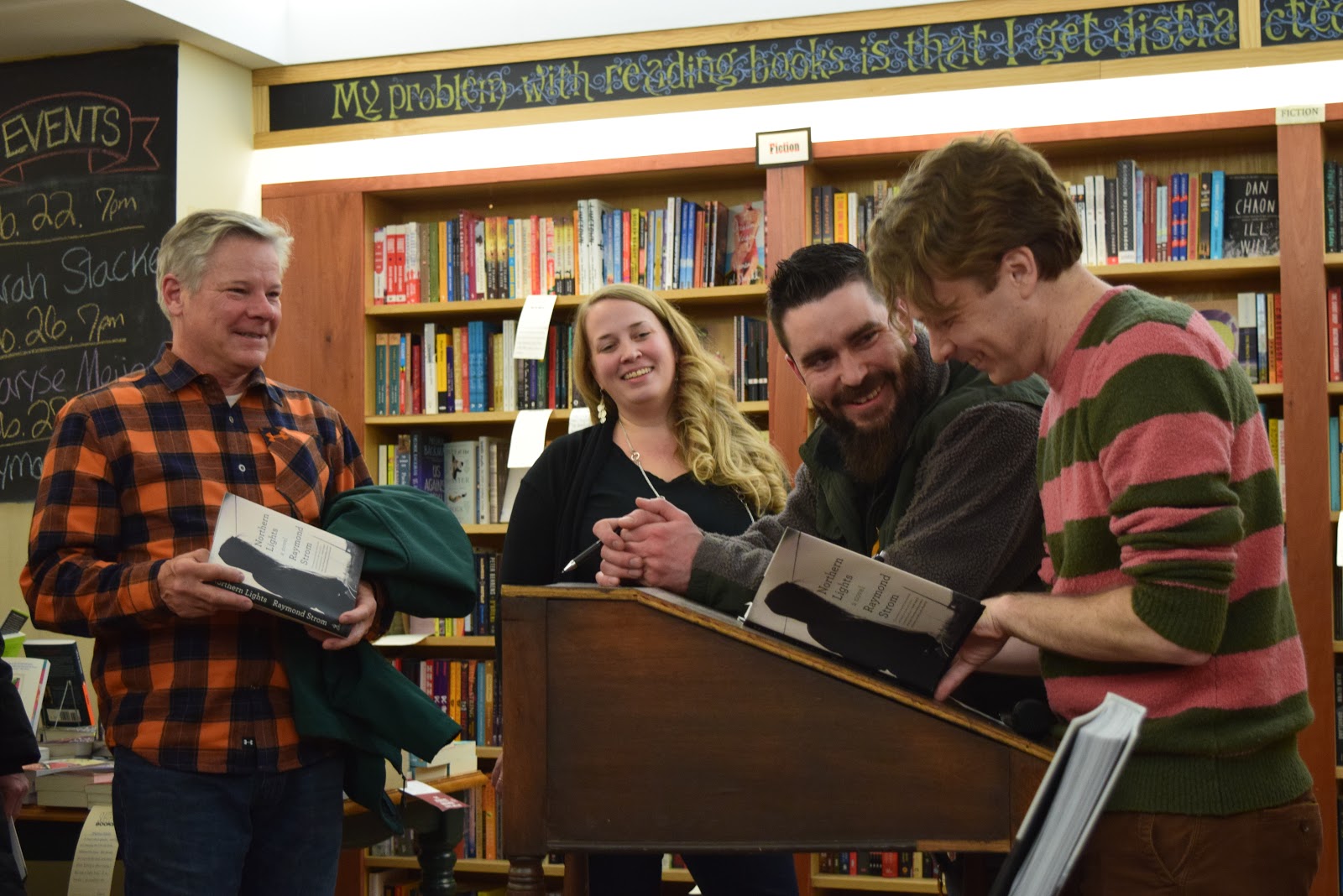
During the audience Q&A, Strom was candid about pulling from personal experience to write the book. An audience member asked what the biggest difference between him and the character of Shane.
He responded that Shane is a lot nicer. “As a seventeen-year-old, he has a lot more integrity [than I did],” Strom said. He noted he was a lot more like the other characters in the book, selling everything he had to his hands on drugs.
Strom described Shane as “almost more of a tourist. He showed up for a couple months. Where we [in real life] had been going through this for years.”
“We do share an appearance,” he added with a laugh. “But that was mainly because I wanted to have him to suffer through the same thing I did, I guess.”
The Subtext bookstore event was well-attended. The guests were old friends, professors, and an assortment of new-to-Strom readers, all engaged.
There was no shortage of questions during the Q&A, both personal and professional. The final question of the night: “Is there anything you want readers to take away from the book?”
“I really just wanted it to be a portrait of this time, the area, and these people, just so people can see what’s going on over here,” Strom said.
“There’s a lot of talk, especially within New York,” he said. “People just don’t really understand what’s going on [in terms of the meth crisis]. They think it’s a random white trash problem. They write it off as these people don’t know any better, so they ended up that way.”
“They think it doesn’t matter, but it does.”
In an interview with The Metropolitan, Strom was asked to offer advice to student writers working on identity and theme. He suggested writing 3-4 pages every morning—and then don’t read them for a month.
After that waiting period, go back through and pull out the good ideas, Strom said. “Out of 120 pages, you might keep 10.”
He also recommended having a job to pay the bills, and preferably one that gives you time to write in the morning when the mind is fresh.
“Jobs that deal with people are good for content,” he said. “But the biggest thing is reading everything.”
What about writer’s block? Strom said to “just go do something else entirely.” When he’s stuck, he often turns to “The Artist’s Way: A Spiritual Path to Higher Creativity,” a self-help book by Julia Cameron.
And when asked if he intends to revisit the characters of “Northern Lights” in future works, Strom paused.
He wondered if Metro State still offers a class in Scandinavian immigrant literature, which he took as mail correspondence course. (The answer is “no;” LIT 367 has not been offered since the 2010-11 academic year.)
Strom fondly recalled two books from that Metro State course: O.E. Rølvaag’s “Giants of the Earth” and Vilhelm Morberg’s series “The Emigrants.” They center on Sweden’s 19th century stagnating social fabric which pushed many to emigrate to the U.S.
He thinks that stagnation may not be much different than what occurs in his imagined town of Holm. So perhaps in Strom’s future books, readers may meet “Northern Lights” characters again.
Editor’s Note, June 3, 2019: This article has been updated to clarify the order of events.
“As someone who worked full-time while also being a full-time student, I didn’t take advantage of the opportunities available at the college at all. I showed up for class, turned in my papers, talked to my teachers, and went home. But college should be an immersive experience—a place to make friends and connections, to network for future work opportunities.
Fortunately, I was able to have this experience when I went to grad school. But if my description of college reminds you of your own—and this is the academic advisor in me now—I’d suggest you slow down, look around, make some friends, and make the experiences that you want to have. Join a club or a PIRG [Public Interest Research Group] or go on a study abroad trip.
Go outside your comfort zone and don’t be afraid to take classes that challenge you. The last thing you want to do is play it safe. Good grades on your transcript don’t mean much if you don’t have relevant life experience to go along with them.”
Adjunct lecturer of English, undergraduate advisor
City College New York
EDUCATION
A.A., Minneapolis Community and Technical College
B.A., Metropolitan State University
M.F.A., City College of New York
BOOKS
“Northern Lights” (Simon & Schuster, 2019)
